When a publisher hurried Hokusai to make a quick decision about a project, the artist sent him a sketch showing himself as a poet but covered in a blanket and with a piss bottle at his side as if to say ‘don’t rush an old man’.
The Japanese artist Katsushika Hokusai (1760–1849) never retired. He believed that the older he got, the better an artist he would become. He wished to live to 110 years as he would then reach perfection in his work, and with help from his artist daughter, Eijo (Oi), he worked tirelessly into old age. When he died at the age of 90 (according to traditional Japanese reckoning), he left behind an enormous oeuvre of ukiyo-e woodblock prints, drawings manuals and illustrated books, as well as paintings of a more personal character and great technical accomplishment.
Best known for his Hokusai manga (‘Hokusai’s sketches’) and the iconic Great Wave, Hokusai has been a defining influence on Western art and culture since the ‘discovery’ of his works by the avant-garde in the second half of the 19th century. They placed him among the old European masters such as Rembrandt and Goya, but in Japan Hokusai was not part of the art elite. The ukiyo-e (‘pictures of the floating world’) that won him fame were mass-produced commercial art, and The Great Wave could be purchased for little more than a double-serving of noodles. Today the same print can reach more than £100,000 (still relatively low for Hokusai compared to his paintings).
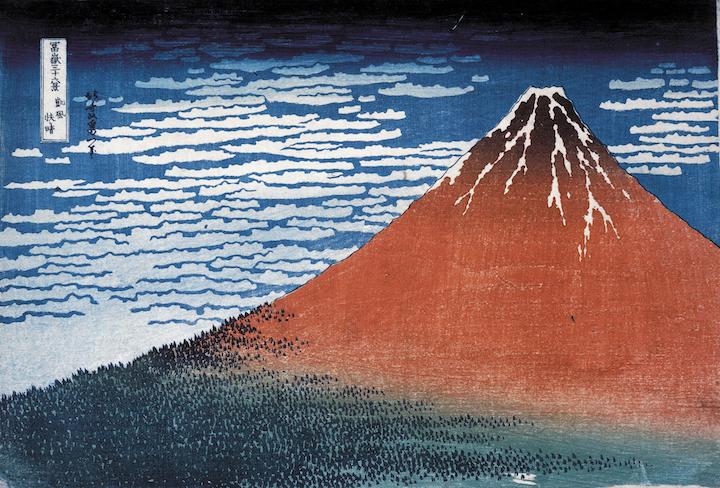
Clear day with a southern breeze (‘Red Fuji’) (1831), Hokusai. © The Trustees of the British Museum
‘Hokusai: Beyond the Great Wave’, recently opened at the British Museum, presents Hokusai in his own time and context – beyond his role and status in Western culture – and focuses on the last 30 years of his life, during which he produced some of his best works. Hokusai was already in his early 70s when he designed Under the wave off Kanagawa (as the Great Wave was originally known). It was one of the first prints in the series Thirty-six Views of Mount Fuji (c. 1830–33), dedicated to Japan’s most sacred mountain. By showing Fuji from different perspectives and in all seasons, Hokusai introduced a new genre celebrating famous places and landscapes, which would be taken up by other ukiyo-e artists, such as Utagawa Hiroshige (1797–1858).
Hokusai did not just create that one iconic wave. In fact, he was fascinated by water throughout his whole life. Included in this exhibition, and on display outside Japan for the first time, is a pair of ceiling panels made in 1845 for a festival cart. As applied art, which is rare among Hokusai’s works, they stand out. But it is their subject that draws you in. In contrast to the artist’s more famous towering example, here we are already caught inside a spiralling wave which resembles a sort of portal into another world.
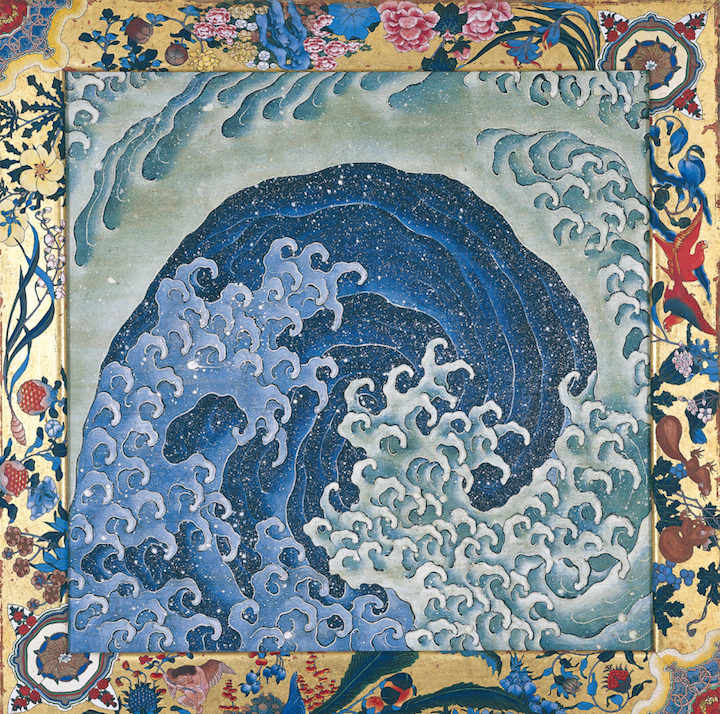
Waves (1845), one of two panel paintings attributed to Hokusai and completed by Takai Kōzan. Courtesy of Kanmachi Neighbourhood Council, Obuse, Nagano Prefectural Treasure
The exhibition really does feel like an adventure into Hokusai’s world. Through his countless designs, we are introduced to flora and fauna, mountains and waterfalls, people, heroes, religious figures, ghosts, demons and mythological creatures, which he captured and presented as testament to his own genius. The exhibition concludes with a pair of hanging scrolls (kakemono), the Tiger in rain and Dragon among rain clouds; his final and probably his technically best works. The exhibition shows Hokusai as both a fine artist, commercial designer and applied artist, but most importantly as a creator of great talent and a strong personality.
This is the British Museum’s first major exhibition on the artist since 1948, and a unique opportunity to discover more of Hokusai’s works, some of which have never left Japan before. To complement it, the Victoria and Albert Museum has put on ‘The Ephemera Effect: Hokusai’s Great Wave’ (until 1 October 2017), a display of contemporary commercial objects inspired by the iconic image, showing how a triumph of commercial art of the 19th century has been reborn as a brand in the 21st. Hokusai might not have lived to be 110 years but his works, and one in particular, live on.
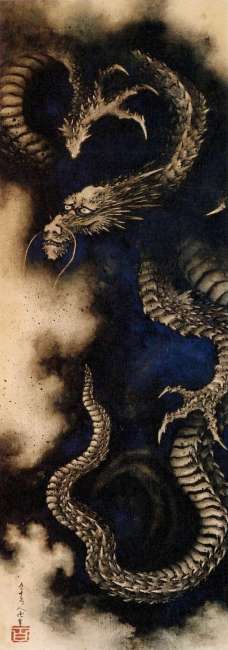
Dragon in rain clouds (1849), Hokusai. Musée national des arts asiatiques Guimet, Paris
‘Hokusai: Beyond the Great Wave’ is at the British Museum, London, until 13 August 2017.
Unlimited access from just $16 every 3 months
Subscribe to get unlimited and exclusive access to the top art stories, interviews and exhibition reviews.

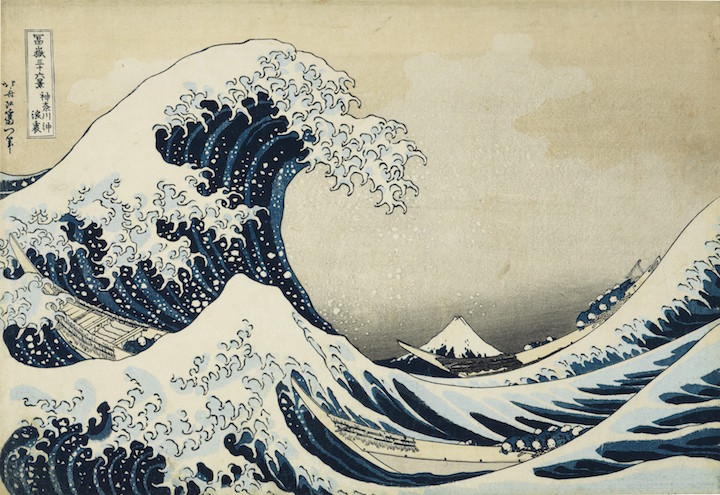


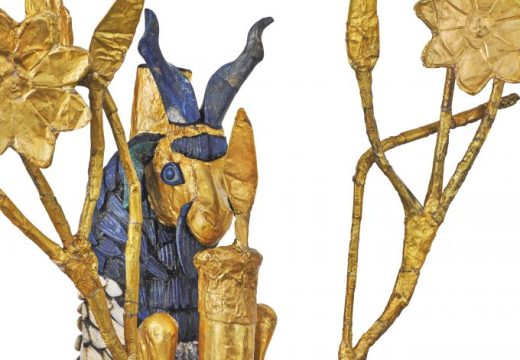









![Masterpiece [Re]discovery 2022. Photo: Ben Fisher Photography, courtesy of Masterpiece London](http://www.apollo-magazine.com/wp-content/uploads/2022/07/MPL2022_4263.jpg)
It’s time for the government of London to return to its rightful home